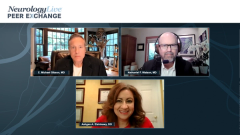
Sleep Disorders: Sleep and Wakefulness Pathways
Nathaniel F. Watson, MD, reviews the pathways involved in sleep and wakefulness cycles as it relates to sleep disorders.
Episodes in this series

C. Michael Gibson, MD: Nate, let’s talk about the mechanisms of action of these agents, but before we do that, let’s talk about sleep cycles including the pathways involved in sleep and wakefulness. As a cardiologist, I don’t know a lot about this, so educate me.
Nathaniel F. Watson, MD: We’re designed to sleep when it’s dark out and to be awake when it’s light out. That’s no revelation. We have a central pacemaker called a suprachiasmatic nucleus [SCN] in the center of our brain. During the day, light hits our retina and stimulates these melanopsin-containing cells. Then, there’s a retinohypothalamic tract that goes back to the SCN in order to continue to keep us awake during the day. It sends a multi-synaptic connection to our pineal gland to reduce, or suppress, melatonin secretion. I go through all of that because when it gets dark out, that connection that’s suppressing melatonin secretion goes away. Melatonin is secreted and goes to inhibit the suprachiasmatic nucleus that was keeping us awake to allow sleep to occur. Now, inside of our brain stem, there’s this flip-flop switch that can helps us transition quickly between sleep and wake. We have a lot of monoaminergic systems in our brain stem. We have the locus coeruleus, where you have norepinephrine. You have the dorsal raphe, where serotonin lives. The periventricular nucleus, where dopaminergic cells are. The lateral dorsal tegmental and pedunculopontine tegmental nuclei, which are astiocholinergic. Lastly, there is the tuberomammillary nucleus, which is histaminergic.
C. Michael Gibson, MD: There are a lot of different targets and different molecules involved.
Nathaniel F. Watson, MD: They’re all working together in our brain to keep us awake. There’s a neuropeptide, called orexin, that’s secreted from the dorsal lateral hypothalamus, which continues to keep these areas stimulated to keep us awake during the day. In fact, type 1 narcolepsy is a disease of orexin deficiency. Those are your wakefulness areas. Then, you have the ventrolateral preoptic nucleus [VLPO] and the median preoptic nucleus [MnPO], which are like a flip-flop switch. When melatonin gets secreted, the VLPO comes and it inhibits all of those other monoaminergic systems. It allows sleep to occur. You kind of have this teeter-totter that goes back and forth. Orexin’s playing a role in stabilizing it in the wake position. Then, you have the VLPO and MnPO, which work through galanin and GABA to kind of cause the brain to go to sleep because it wouldn’t make a whole much sense for it to take a long time for us to go between wake and sleep states. That’s why insomnia is such a problem because we’re not designed to have to take that long to fall asleep. We’re designed to be able to transition between these states fairly quickly.
C. Michael Gibson, MD: Nate, let me ask you a provocative question. Some of us, like me, wake up in the middle of the night. I’ve read that hunter-gatherers and other kind of more primitive cultures have a diurnal kind of pattern to their sleep. Do I have a sleep disorder, or is this a cultural pattern in some societies when we’re hunter-gatherers going out hunting in the night? Is it normal or abnormal?
Nathaniel F. Watson, MD: That’s a great question. That kind of notion of having a second sleep, or a brief period of wakefulness in the middle of the night. In wintertime, before the light bulb was invented in the 1870s, darkness persisted for so long that it would exceed the amount of time that a person would need to sleep, which would be somewhat unusual for it to be 10 or 12 hours. In societies under that circumstance, when darkness is significantly longer than a person’s sleep need, then that would make sense and be normal. Obviously, now that we live in a different situation when we control light and dark patterns, and you could argue that the light bulb was the first piece of technology that negatively impacted human sleep. Then, maybe the alarm clock would be number 2. But we have to imagine different ways for people to get the sleep that they need. It’s not always an optimal, single block of sleep at night. In fact, we know that there’s a natural dip in that circadian alerting signal around 2 or 3 o’clock in the afternoon, where the line to the coffee shop is often the longest. That’s normal and some cultures take advantage of that to take an afternoon nap, and build it into their culture and society. That would be normal and the optimal time to take a nap at that time. There’s lots of different ways to achieve sleep health.
Transcript edited for clarity
Newsletter
Keep your finger on the pulse of neurology—subscribe to NeurologyLive for expert interviews, new data, and breakthrough treatment updates.




